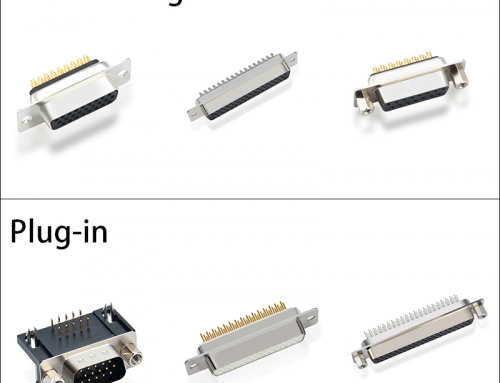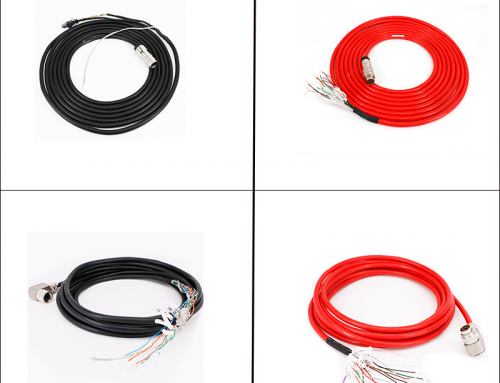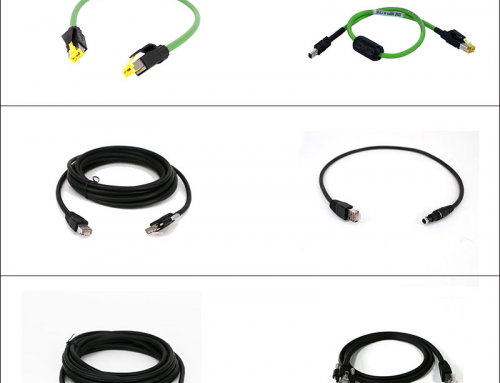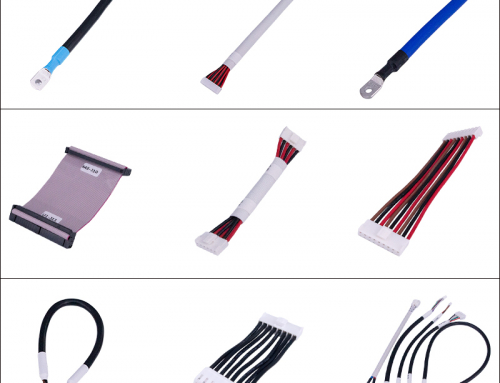- Machine Vision Cable Introduction
Machine vision is to image the product or area, process the image with special image processing software and automatically judge the position, size and appearance information of the product, and judge whether it is qualified or not according to preset standards, and output its judgment information to the actuator. Achieve the purpose of speeding up production, reducing defects and reducing costs. Machine vision has four functions: visual positioning, pattern recognition, size measurement and defect detection. With the development of Industry 4.0, machine vision is widely used in intelligent factories. The intelligent manufacturing system is divided into three parts: “Industrial Hand” industrial robot; “Industrial Eye” machine vision system; “Industrial Brain” intelligent production system composed of cloud computing, big data, machine intelligence and expert experience. A typical machine vision system usually consists of seven parts: industrial cameras & lenses, light sources, sensors, data acquisition cards, industrial PC platforms, vision processing software, and control units. As the “nerve” of the system video signal and control signal transmission carrier, the cable connecting the industrial camera and the data acquisition card plays a very important role.
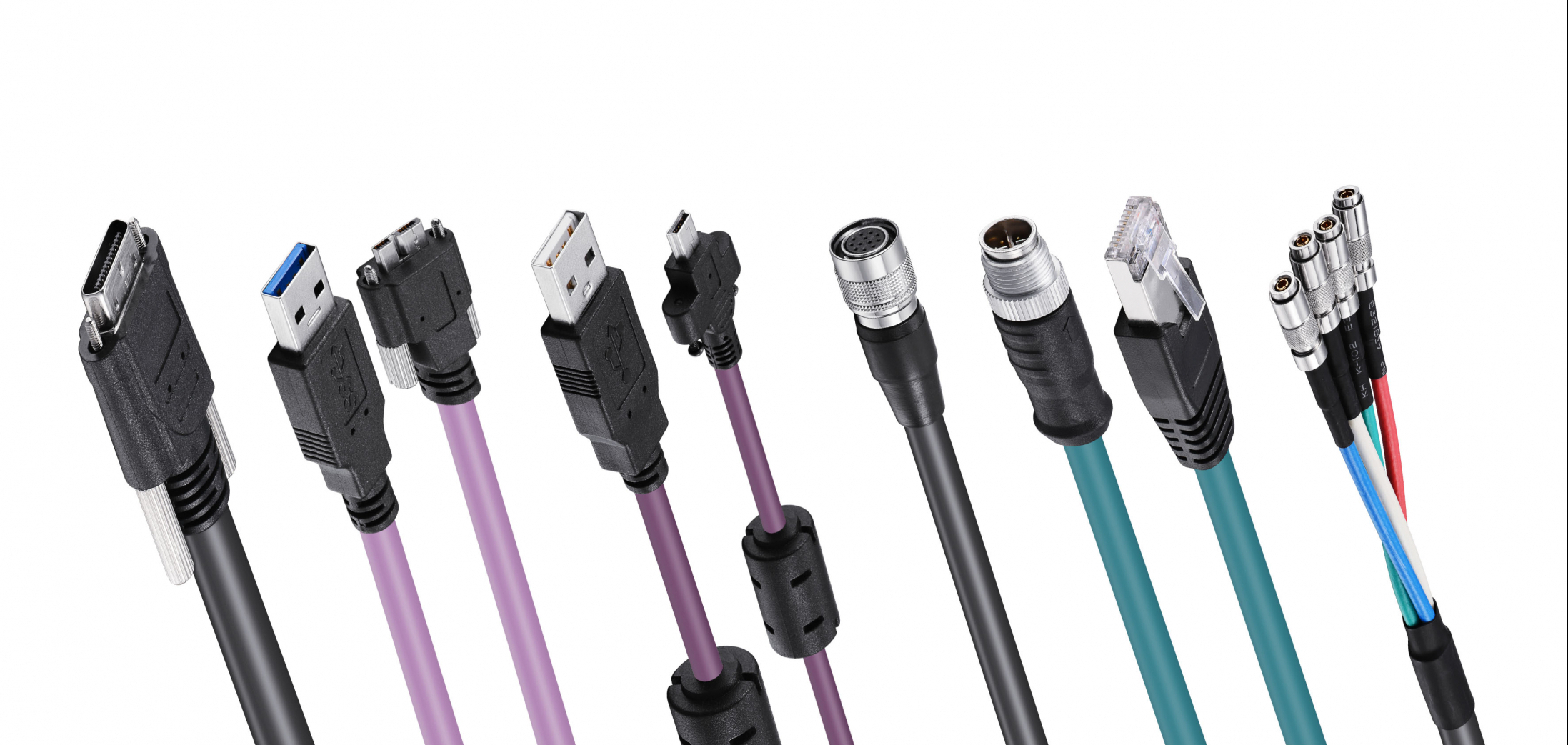
- Electrical performance test

Machine vision is widely used in various automation occasions. Some automation environments are often more complex and harsh. Zhaolong Interconnect has a deep understanding of the key requirements of industrial environment wiring, and fully understands the different requirements of MICE in industrial environments. Specially launched machine vision The cable assembly solution can meet the application requirements of different complex environments. We simulate complex field conditions as much as possible, and the cables have undergone comprehensive electrical performance tests, physical tests, environmental tests, etc., and the reliability is guaranteed.
Common machine vision cables are Gige, 10Gige, USB3.0, Cam
eralink, Coaxpress and cable trigger cables.
Gige is a standard interface on almost all PC hardware and is widely used. Long-distance transmission can be achieved, theoretically up to 100m. A cable solution is possible (POE – Power over Ethernet). The disadvantage is that the CPU needs to be optimized, and the transfer rate is average. 10Gige has similar characteristics to GigE. It can meet the high-speed transmission of 10Gbps, but the disadvantages are: the cost of the system solution is high, and the 10GigE system of domestic manufacturers is currently unstable.

Cameralink is a very mature and reliable camera interface with fast speed, which can implement a one-cable solution, namely PoCL. The missing point is that the length of the cable is short, the cost of the wiring harness is too high, the size of the connector and interface is too large, and a special capture card is required, and the system cost is high.
 CoaXPress has ultra-high speed, a single core can achieve 6.25G and 12.5G transmission rates, and 4 cores can meet 25G and 50G transmission rates. The transmission distance is long, and theoretically it can meet 6.25G at 40m and 12.5G at 30m. Coaxial cable design, small outer diameter, the interface can be HD BNC/DIN, the interface size can achieve miniaturization and high density. The missing point is the relatively new interface, lack of software and hardware support, and the current wiring harness cost is also too high.
CoaXPress has ultra-high speed, a single core can achieve 6.25G and 12.5G transmission rates, and 4 cores can meet 25G and 50G transmission rates. The transmission distance is long, and theoretically it can meet 6.25G at 40m and 12.5G at 30m. Coaxial cable design, small outer diameter, the interface can be HD BNC/DIN, the interface size can achieve miniaturization and high density. The missing point is the relatively new interface, lack of software and hardware support, and the current wiring harness cost is also too high.
 USB3.0 is a common standard hardware interface, high speed can meet 5Gbps, low CPU load, low signal delay, low power consumption, can realize a cable solution, that is, power supply through USB 3.0 cable). The missing point is that the cable length is short, and long-distance transmission requires high-cost Active or AOC solutions. There are also source lines for various electrical interfaces that are specially designed for industrial cameras of machine vision systems to provide power and trigger signals for the cameras.
USB3.0 is a common standard hardware interface, high speed can meet 5Gbps, low CPU load, low signal delay, low power consumption, can realize a cable solution, that is, power supply through USB 3.0 cable). The missing point is that the cable length is short, and long-distance transmission requires high-cost Active or AOC solutions. There are also source lines for various electrical interfaces that are specially designed for industrial cameras of machine vision systems to provide power and trigger signals for the cameras.


